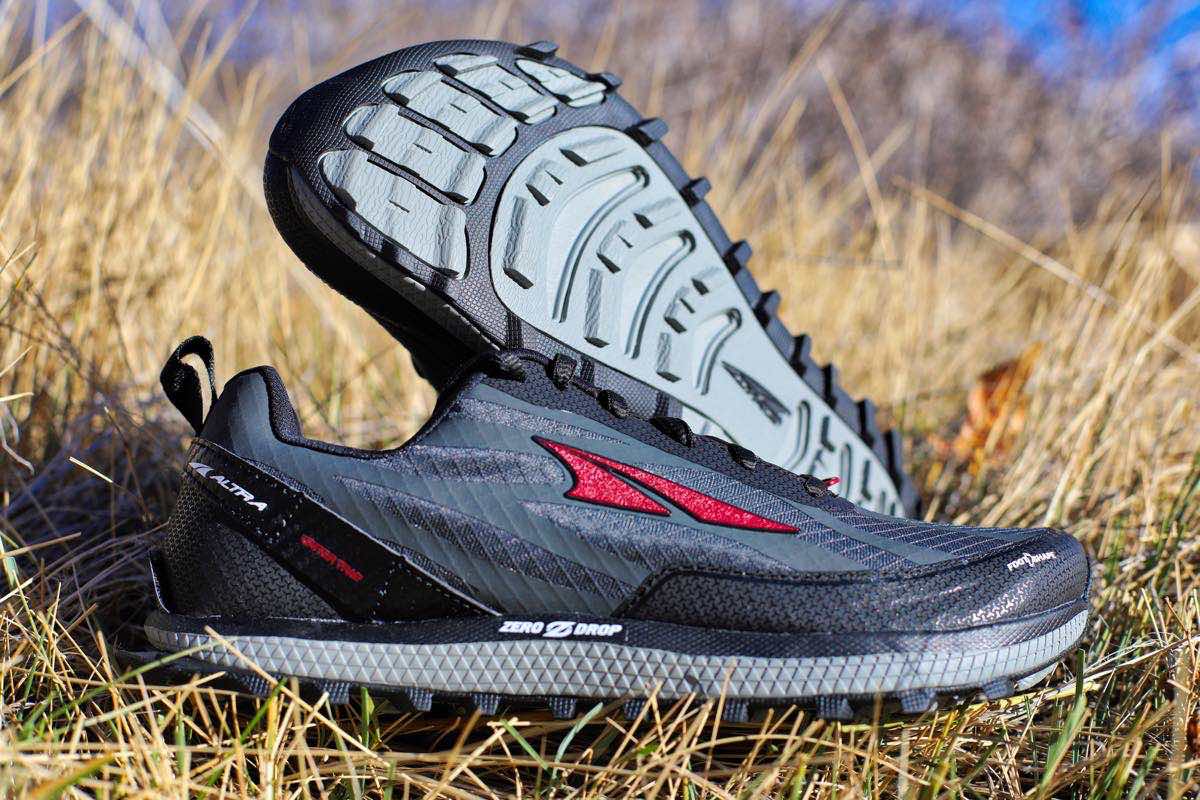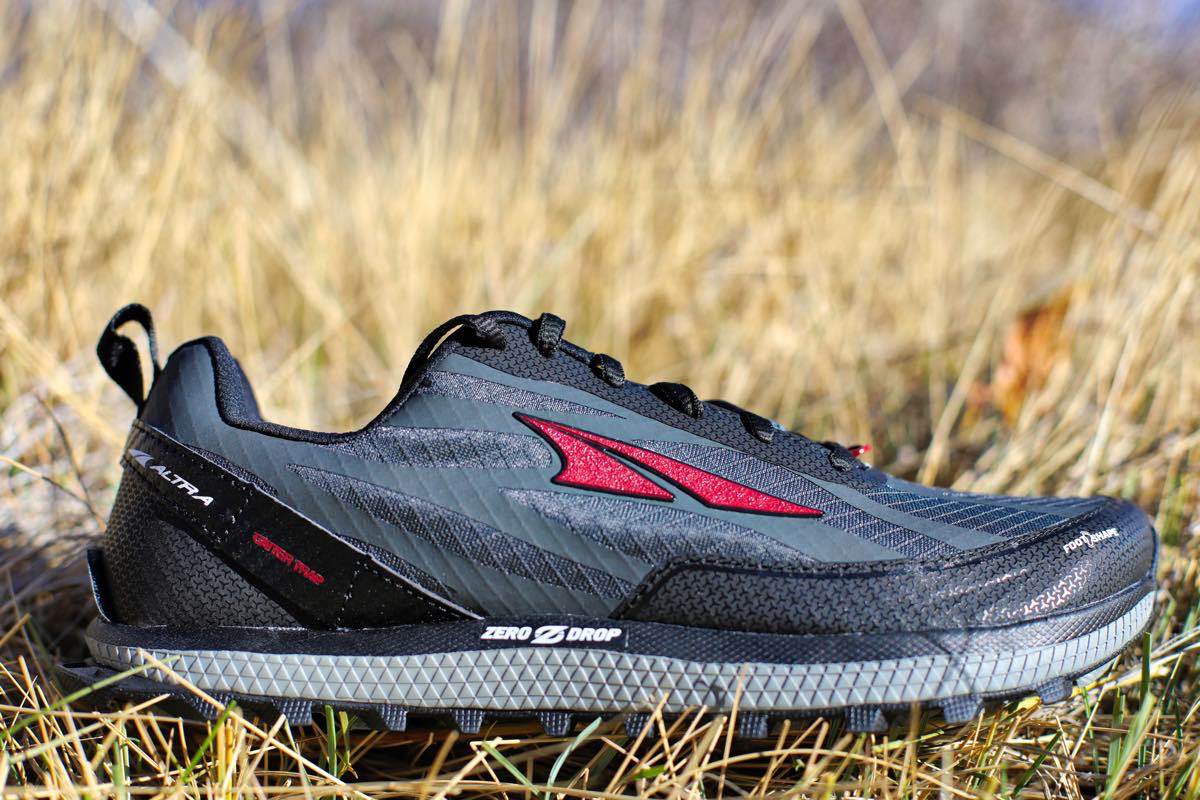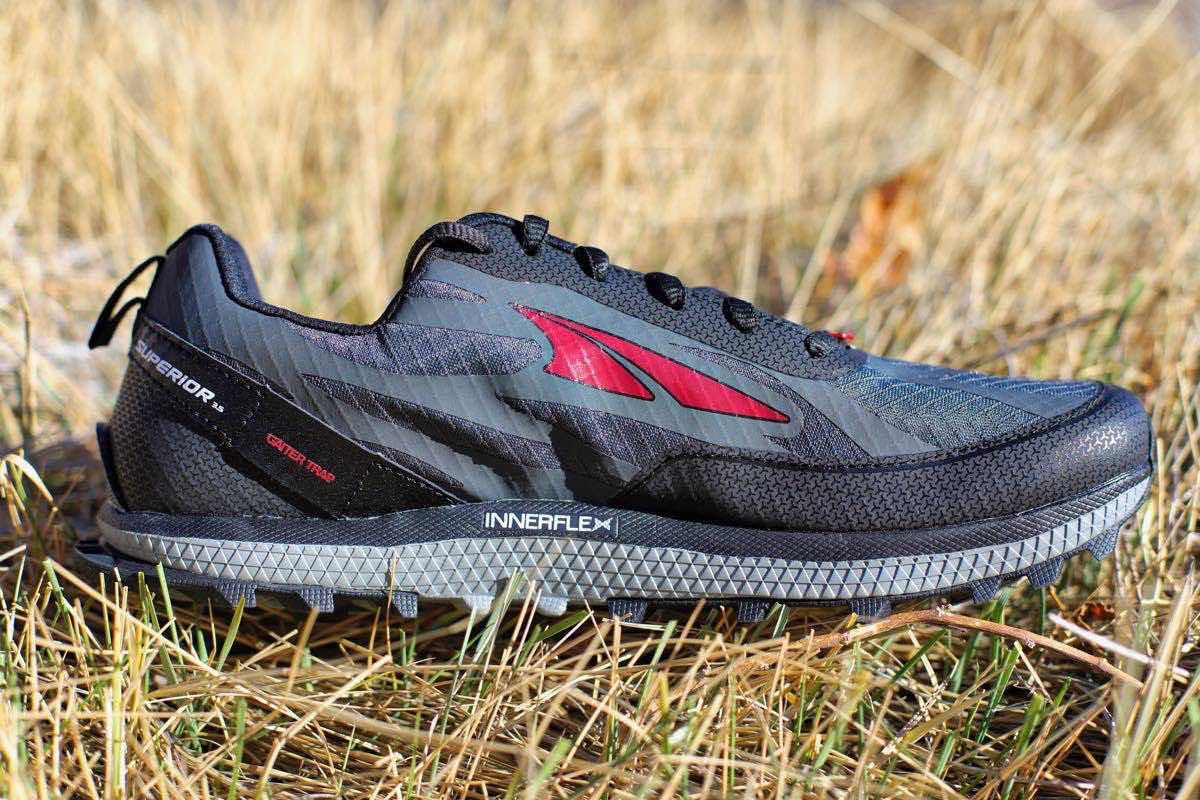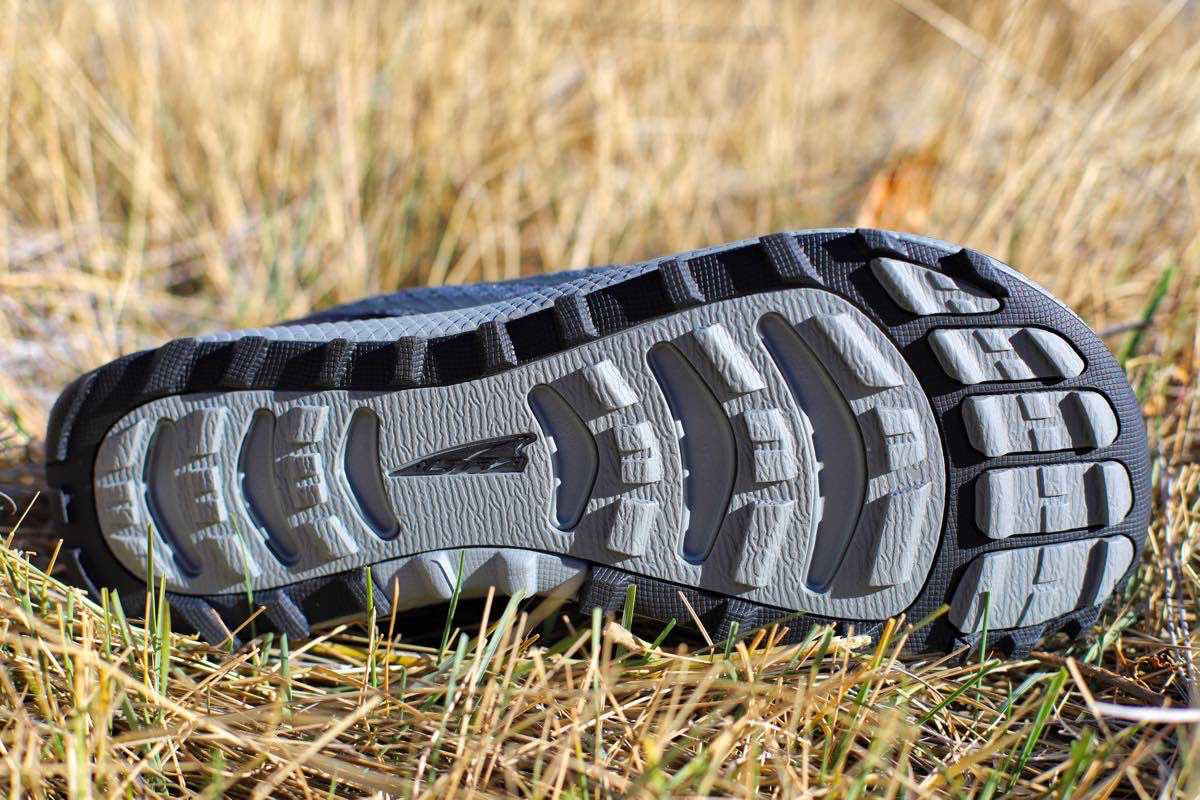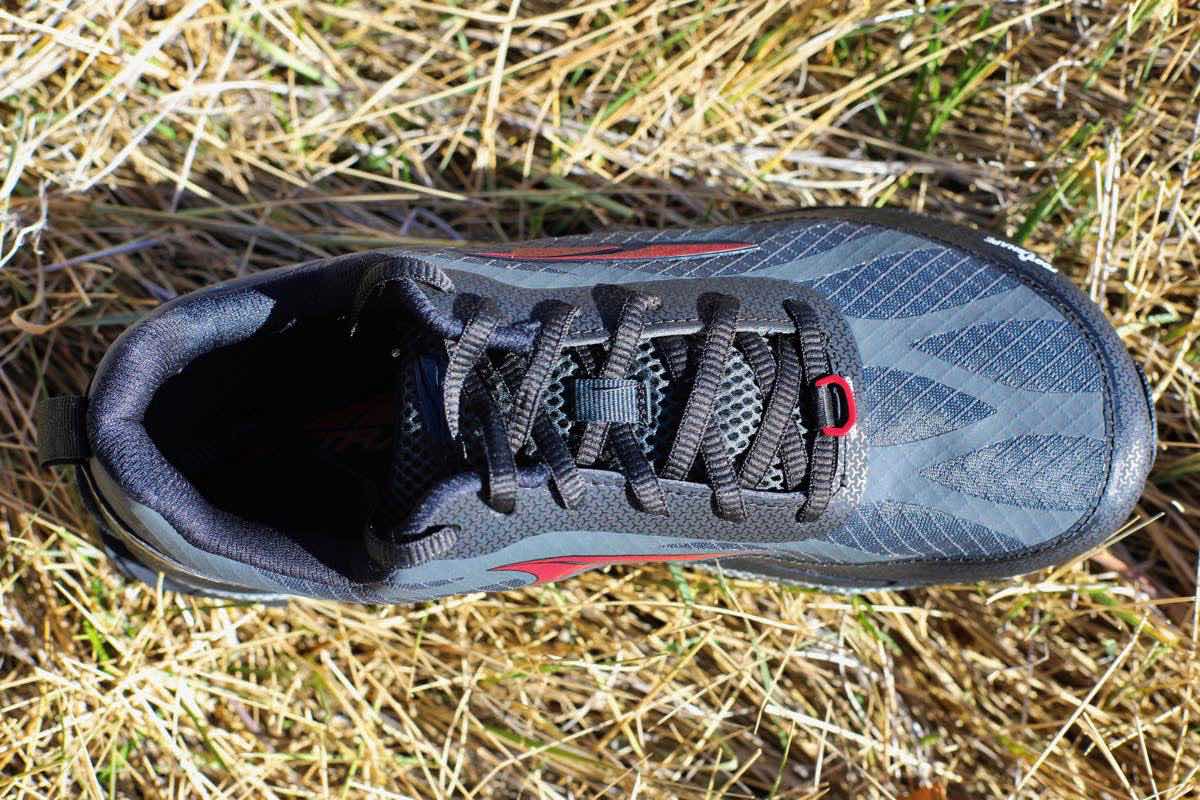Our Favorite Trail Running Shoes
Check out our Best Trail Running Shoes buyer’s guide to learn about our current favorite trail running shoes!
Altra Superior 3.5 Review
The Altra Superior is a shoe that I fell in love with after the release of the Superior 2.0, and it’s a shoe that I’ve always felt is about 80% developed to its potential. With its historically moderate stack height (18mm), dialed-in fit, and gloriously roomy Altra toebox, this has always been my favorite model in the Altra arsenal. Added-in bonuses of the Superior include a removable rock plate that lives underneath the insole and overall flexibility that has stayed true to the model’s minimalist, zero-drop roots. Where I’ve always struggled with this shoe is over the longer distances. I think of the Superior as a 50k shoe, and that is pushing it on rougher trails. The smooth, comfortable, and minimalist feel of past Superior models always feels perfect to about 15 miles and then I’ve found myself wishing for something a bit more cushioned on my feet.
So, cue the Altra Lone Peak. With a slightly thicker, 20mm stack height, the Lone Peak has always been the comfy, a-little-sloppy, sofa-feeling bigger brother to the Superior. However, this is not the case anymore. The Altra Superior 3.5 ($110) gets reinforcements throughout the upper and a slightly thicker stack height to become the best-possible version of the Lone Peak ever made. With this review of the beefed-up version of the Superior, my aim is to tell you what I like about it, but also what makes this version of the Superior a bit of a diversion from its heritage.
Altra Superior 3.5 Upper
A first glance, the updated upper of the Superior doesn’t seem to differ much from the 3.0, and you would be absolutely right. Altra continues to employ what works in this upper, including a robust but not rigid toe bumper that extends around the sides of the foot into the rand of the shoe. Additionally, welded overlays web out from the lacing system in all the right places so as to not cause irritation at the sides of the foot on sensitive pinky toes or bunions, and the exact same heel cup/ gaiter trap design is used.
While there are only a few small upper changes made from the Superior 3.0 to the 3.5, they are significant. Altra uses sausage laces on the update, which decrease pressure on the top of the foot, and a gaiter-attachment loop is placed at the toebox. These minor changes pale in comparison to what truly makes this shoe a winner, which is a slightly deeper toebox. While the Superior 3.0 had plenty of room for toe splay, the shoe was a bit constricting with its shallow toebox that extended through the midfoot and placed an undo amount of pressure throughout the top of the foot. With this updated fit, the Superior 3.5 becomes the best-fitting Altra shoe ever designed, in my opinion, as it can handle swelling from an ultramarathon as well as feeling locked down enough through the midfoot for technical and off-camber trails.
While the fit of the Superior is vastly improved with this version, there are still some issues with this upper. Like many trail-shoe manufacturers, Altra has made the upper on the Superior more durable than ever to deal with complaints of blowouts. The Quick-Dry Air Mesh of the Superior 3.5 is certainly durable, and I’d say that it dries at an average rate compared to most <trail running shoes. However, this upper is hot, and even while testing this shoe during a Colorado fall and winter, whenever it got above 60 degrees Fahrenheit, I felt like my feet were sweating significantly. This was evidenced by the salt deposits I left all over the uppers on this shoe.
Additionally, I experienced some irritation during my first few runs where the underside of the tongue is sewn into the toebox, and this caused some hot spots and rubbed the skin away on my second- and third-toe junctions. A simple examination of the 3.0 and 3.5 reveals a much softer fabric against the top of the foot in the 3.0. Strangely enough, this issue only bothered me during the first two runs in the Superior 3.5, and it never bothered me again. For the record, I typically have worn Drymax Lite Trail Run running socks during my testing period.
Altra Superior 3.5 Midsole
Altra retains the excellent feel of the Superior midsole with this version while beefing it up a whole 1mm. One may ask, “Can you feel 1mm of midsole?” Well, I certainly can, and I appreciate this 19mm, zero-drop midsole more than ever. This is the first version of the Superior that I could imagine wearing for a 50 miler with my geriatric feet. The dual-layer midsole is great for faster running and the Superior 3.5 certainly does not feel like a 10.8-ounce shoe. Added in is the removable rock plate (1 ounce on its own), which offers just enough protection for most trail surfaces, but not enough in my opinion, for technical trails with a lot of sharp and jagged rocks.
As always, Altra uses a zero drop from the heel to the toe of the shoe, and the 3.5 seems less rockered than past versions. Whether or not you, individually, can handle a zero-drop shoe over the long haul seems to be completely subjective. I’ve known runners who will take months to transition to zero drop and they still struggle with sore and cramping calves. Alternately, I seem to be able to transition between 0mm and 6mm drops without issue. I will say that I do notice a significant tax on the ancillary small muscles around my ankles and lower calves. This seems to happen in all Altras that I wear, especially when I transition into longer runs. I do wear zero-drop shoes casually and to work, so it’s not a transition issue. While I understand the purpose of zero drop, a wise friend of mine said it best, “Altra would basically take over the trail running market if they offered their shoes in 4mm and 8mm drops.” I completely agree with him.
Again, I feel the need to emphasize how locked down the fit is in comparison to other Altra trail shoes such as the Timp and the Lone Peak. With the Superior 3.5, I feel like I bomb down a hill without my foot sliding forward or having the insole bunch up in the shoe.
Altra Superior 3.5 Outsole
This is an area that I feel like really needs attention prior to the next Superior upgrade. Altra’s DuraTread Rubber with TrailClaw outsole is designed to be soft and sticky in the middle with a harder, carbon rubber outsole around the exterior. This interior rubber, while sticky, is much too soft, and I feel like its showing some premature wear. I also felt like the soft durometer of this outsole rubber allowed pointy rocks to poke my feet a few too many times, especially while running downhill. With the soft and springy feel of Altra’s A-Bound Blend midsole, one could expect that a hard and durable outsole would be a nice compliment to really grab the terrain.
Also, for the love of all that is holy, get rid of the Trail Rudder. I think it has been a nice aesthetic nod, but it is completely non-functional. I know this because I’ve cut off the trail rudder in most of the Altra shoes I’ve worn over the past several years, and I don’t notice any difference in running downhill. Getting rid of the Trail Rudder saves weight and keeps little pebbles from getting flipped up into shoes.
Altra Superior 3.5 Overall Impressions
I put over 200 miles on this shoe in an attempt to really grasp why or why I wouldn’t chose this shoe for an ultra. Essentially, what I came away with is that the Altra Superior 3.5 is the best Altra Lone Peak ever designed. Altra has chosen to abandon the spry and airy feel of Superiors past in favor of a beefed-up, long-haul comfort monger that will be a great shoe for any runner who can handle zero drop for the duration of an ultra. The Superior 3.5 became a daily trainer that I really enjoyed for about the first six miles of every run, but then I did notice additional fatigue hampering a lot of the small muscle groups around my ankles and calves, especially while going up steep hills. While one could argue that my feet and calves are just not strong enough in those areas, I would argue back that this phenomenon doesn’t happen if I wear a shoe with a 4mm drop.
If you are a fan of the recent iterations of Altra Lone Peaks, I would urge you to try the Superior 3.5. The fit is absolutely phenomenal, the upper is as durable as they come, and the midsole and removable rock plate are beefed up just enough to handle ultra distances. However, if you’re looking for a lighter Altra consistent with the heritage of the original Superior, then you’ll have to look somewhere else. This Superior 3.5 is now heavier than the Lone Peak 3.5, and while I feel that the fit is superior in the Superior, the added weight seems and feels unnecessary. Lets start with getting rid of that Trail Rudder.
Call for Comments (from Meghan)
- Are you running in the Altra Superior 3.5? What do you think of the shoe overall?
- If you’ve run in previous versions of the Superior, what are your thoughts on the updates in version 3.5?
- Trail Rudder, yay or nay? Let’s have this discussion. :)
[Editor’s Note: If you’re affiliated (i.e., an employee, ambassador, etc.) with a shoe brand, please share your relation in each of your comments on this article. Thanks!]
